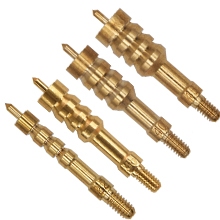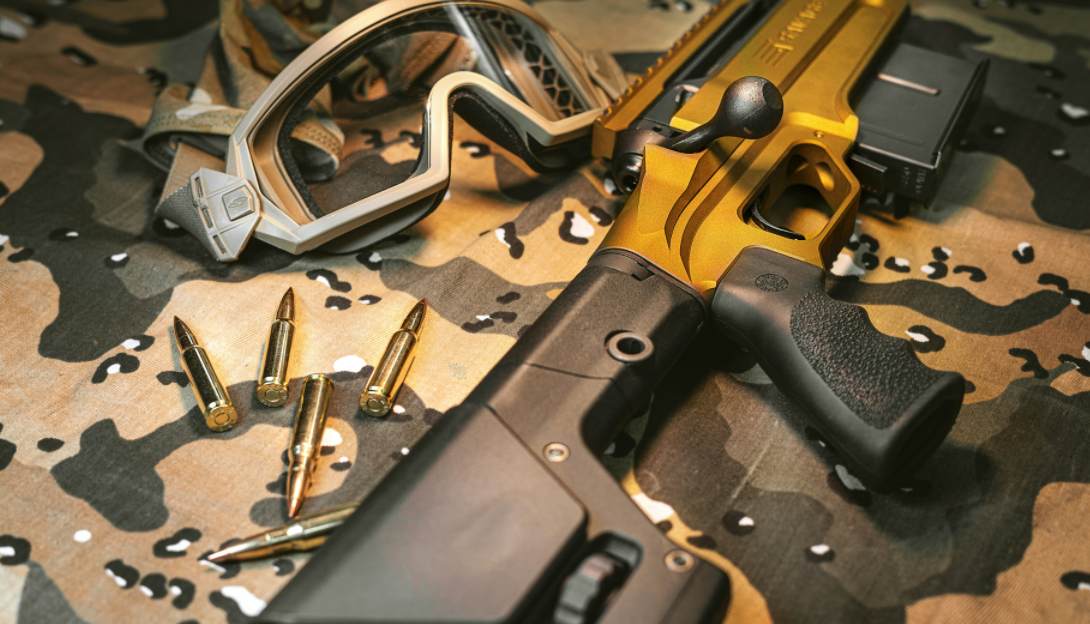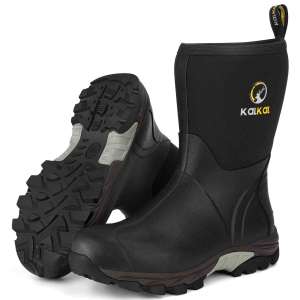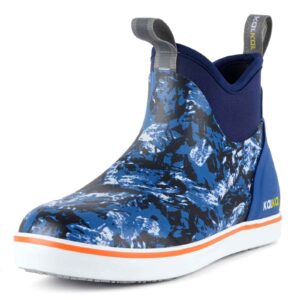Did you ever hit a range where you suddenly experienced a decline in your rifle or pistol’s performance? One might think of cleaning the room from head to toe! But merely drawing a rag over the barrel is not enough. That is where the gun cleaning jags arrive.
Many of these parts go unnoticed while performing a great service when it comes to clearing out obstinate debris and ensuring that your firearm runs like a top.
This guide introduces you to the concept of gun cleaning jags and how they work, the types, how to choose one, and how to properly use it. We will also provide some insights on how to take good care of your jags.
So, by the time you reach the end of this article, you will know everything you need to know about gun cleaning jags and how they can keep your firearm clean, accurate, and reliable.
What Is a Gun Cleaning Jag?

A gun cleaning jag is a narrow and pointed instrument used in handling guns during cleaning activities. It looks like a small rod with a threading on the front part that screws onto the cleaning rod and the other end featuring a head that is intended to hold a cleaning patch.
The obvious function of a jag is to provide the means to slide, or snap, the cleaning patch through the barrel of the firearm.
The controlled application also maximizes cleaning, avoiding aggregation of the patch and its possibility of getting stuck within the bore. In other words, the jag effectively and safely allows for the cleaning of the gun barrel.
Jags are typically made from three main materials:
- Brass: The most common material, brass jags offer a good balance of durability, affordability, and cleaning effectiveness. They are strong enough to handle repeated use and provide a tight fit with the cleaning patch.
- Plastic: Less expensive than brass, plastic jags are lightweight and often preferred for cleaning delicate firearms. However, they may not be as durable, especially when used with harsh cleaning solvents.
- Nylon: A relatively new option, nylon jags offer a combination of strength and flexibility. They are gentle on the bore yet can withstand the demands of cleaning.
Different Types of Jags and Their Uses
It is, however, very important to understand that not all jags are the same. Beyond the material variations, there are several distinct types designed for specific cleaning tasks
Standard Jag: This is the most common type as it comes with a basic rounded head to accommodate a round cleaning patch. It is convenient for wiping off dust or other powdery deposits, lead deposits, and many other regular barrel deposits.
Mopped Jag: It has a wider rectangular end with a slotted head that you can fix a mopped cleaning brush on. Mopped brushes have a wider sweeping surface and they are ideal for cleaning massive fouling or tough deposits.
Specialty Jags: For specific cleaning tasks, there are jags with poles having different types of heads. For instance, a slotted jag with a pointed tip can go into the small areas like the gas ports in the AR-15 rifles. Another type is the “tombstone” jag, with a flat head for cleaning shotgun bores, for instance.
How To Choose The Right Jag?
Selecting the right jag for your firearm boils down to two key factors:
Caliber: This depends on the caliber of firearm that it is designed to feed and each jag is dimensioned to suit a certain caliber. If the wrong size is employed, it may harm the bore or be unable to pad it adequately. Be certain that the jag diameter is appropriate to the gun barrel that you will use.
Cleaning Task: Take some time to consider what has to be cleaned, for how often, and at what level. In terms of mouth care during a general cleansing, a standard jag with a cleaning patch will be enough. For more severe forms of fouling, one can use a mopped jag with a brush attachment. If you have a special cleaning requirement, for instance, cleaning a gas port, then you can use a specialty jag.
What Are Jags For In Gun Cleaning?
We’ve established that jags act as carriers for cleaning patches, but what are the specific benefits of using them, and how do they work their magic?
Benefits of Using Jags
- Thorough Cleaning: Jags ensure a tight fit for the cleaning patch, preventing it from bunching up or leaving fibers behind. This allows for a more consistent and complete cleaning of the bore.
- Reduced Risk of Damage: Using a jag eliminates the need to push the patch through the barrel with your fingers or cleaning rod, which can potentially scratch the bore.
- Efficiency: Jags allow for a quicker and more controlled cleaning process compared to pushing patches through by hand.
How Jags Work
- Attach the Jag: Screw the Jag’s threaded end onto the cleaning rod.
- Patch Up: Place a cleaning patch on the jag’s head, ensuring a snug fit.
- Cleaning Action: With the cleaning rod and jag assembly, push or pull the patch through the barrel several times, utilizing solvent as needed. The jag acts as a stable platform for the patch, ensuring it effectively scrubs the entire bore.
Alternatives to Jags
While jags are highly recommended for effective cleaning, there are a few alternative methods:
- Bore Snakes: These cable-like cleaning tools with a brush head at the end can be useful for quick cleanings. However, they may not be as thorough as jags and patches, especially for removing heavy fouling.
- Cleaning Patches Pushed by Rod: This method is less than ideal as it can lead to uneven cleaning and potentially damage the bore if not done carefully.
Tips and Tricks For Effective Jag Use
Moving forward, let’s discuss some more expert tips on how to get the most out of your jag knowledge and make sure that your firearm is treated right.
Jag Like a Pro
- Patch it Right: Clean with high-quality cleaning patches that are made for your jag and belong to the correct caliber of your firearm. However, the best fit is good for cleaning, it should be a tight fit.
- Solvent Savvy: Some of the instructions relating to usage include applying solvent on the patch before inserting it into the jag. This means that distribution will be even all through the bore. Do not immerse more than necessary as too much solvent can penetrate the stock and affect the finish.
- Oil Control: Cleansing with solvents must be followed by a separate, dry area while using oil for protection. This helps in avoiding the formation of a bad mixture of the oil and cleaning residues that affect lubrication.
- Jag Maneuvers: Ensure that when pulling or pushing the jag through the barrel, its movements are gentle, supple-like-like, and consistently forceful. If the bore is scratched, one should not use forceful rubbing since this is likely to ruin the rifling.
- Multiple Passes: Do not underestimate the value of cleaning passes. Pull the jag and patch through the barrel several times with fresh patches until the patches are free of stain.
Common Mistakes to Avoid
- Forcing the Jag: This is due if the jag feels tight, ensure the patch size equals the caliber and there is nothing that hinders the bore. Do not push the jag hard as it can bend the barrel or harm the jag in the process.
- Dry Cleaning: For cleaning a dirty firearm, it is recommended that one should use solvent only. A dry patch will just scrub the fouling in a circle and do nothing else to it.
- Mixing Patches: When using the patch avoid applying solvent and oil in the same location. This way, no cross-contamination of the previous step occurs to compromise the final product’s quality.
Jag Care
- Post-Cleaning Rinse: Finally, wash off any remaining solvent or dirt particles that may be in the jags using warm water after cleaning. It is recommended that these be dried to a crisp before the actual storing process can be carried out.
- Storage Smarts: Keep your jags in a cool, dry place where they are not exposed to direct sunlight. It will also help them avoid any kind of warping or even cracking down the line.
Conclusion
To summarize, gun cleaning jags are a very useful and basic accessory, which helps to keep the firearm in good shooting condition. The patches give a certain sterilized area for scrubbing thus avoiding contact with the surface proper but at the same time offering the surface its much-needed cleanup.
To be more specific, the following factors can help in enhancing your gun cleaning process and keeping your firearm in optimal condition at all times.




















Leave a reply